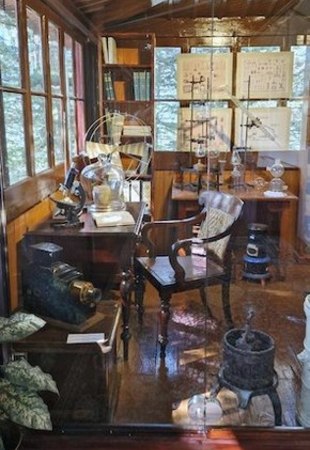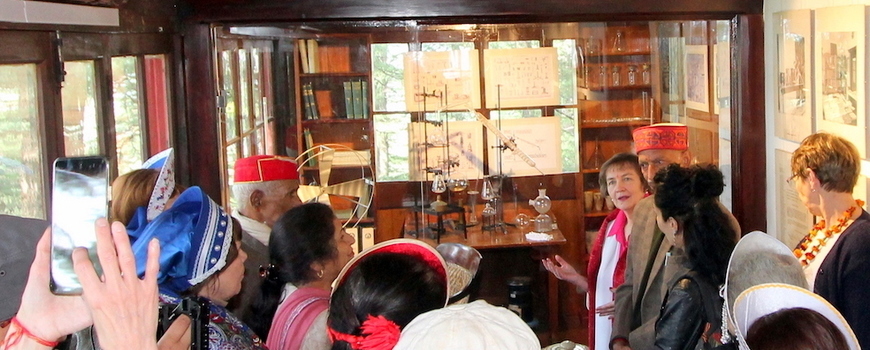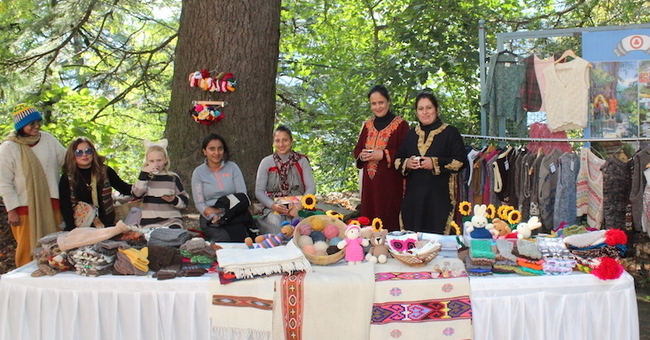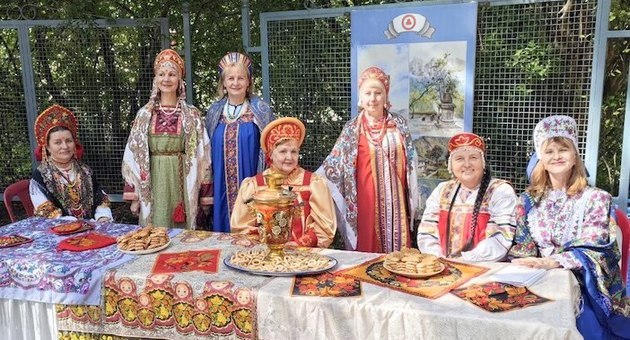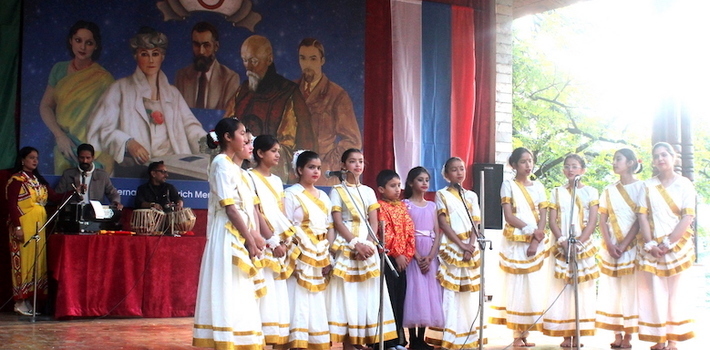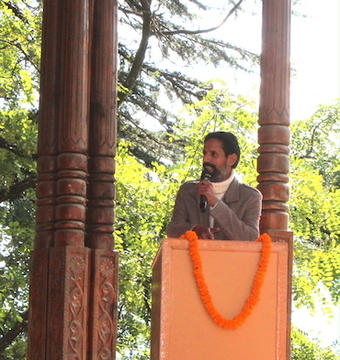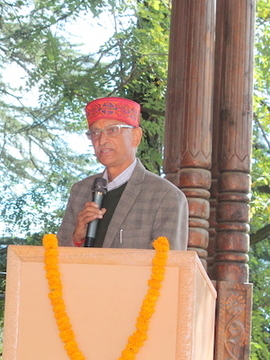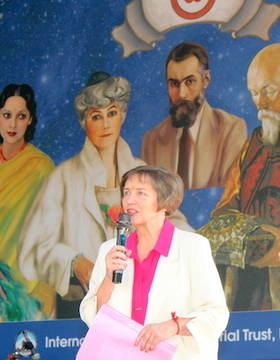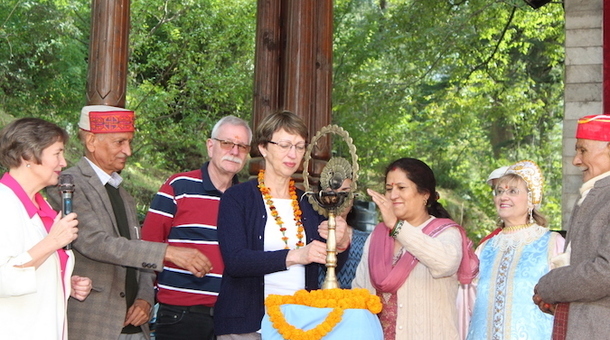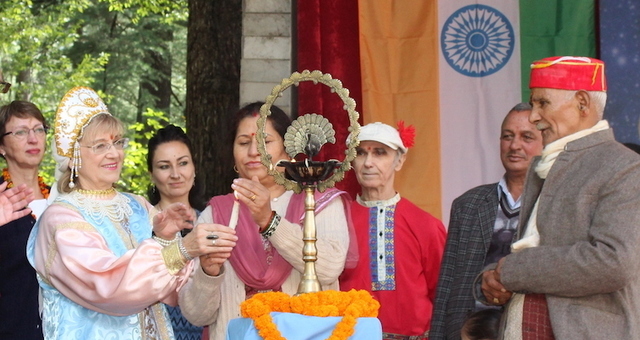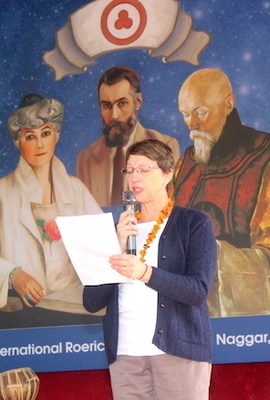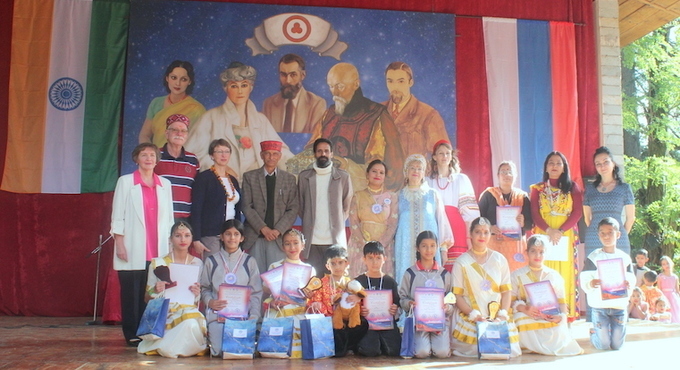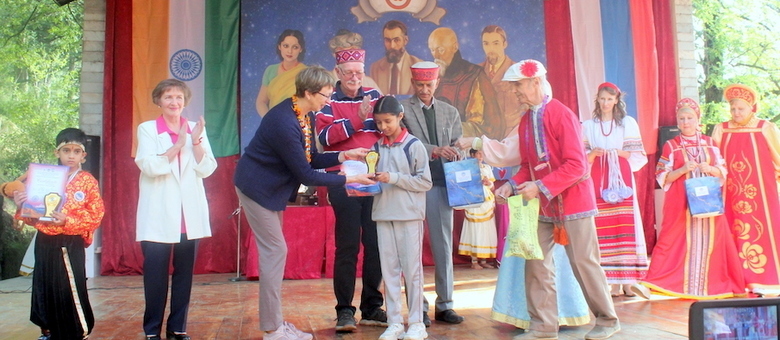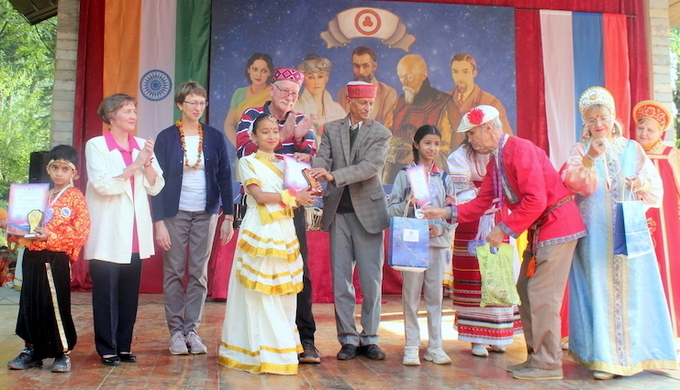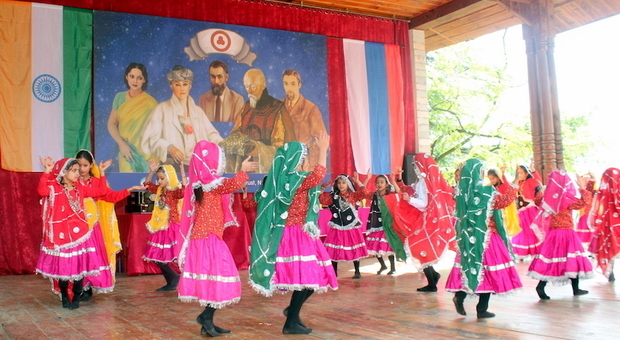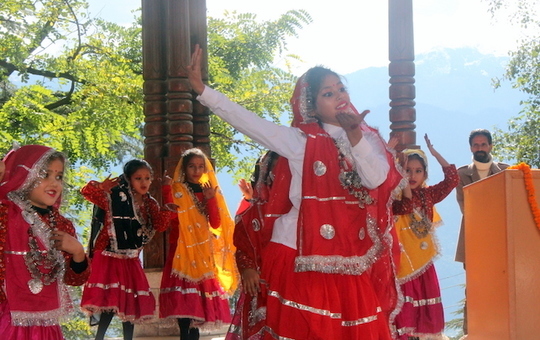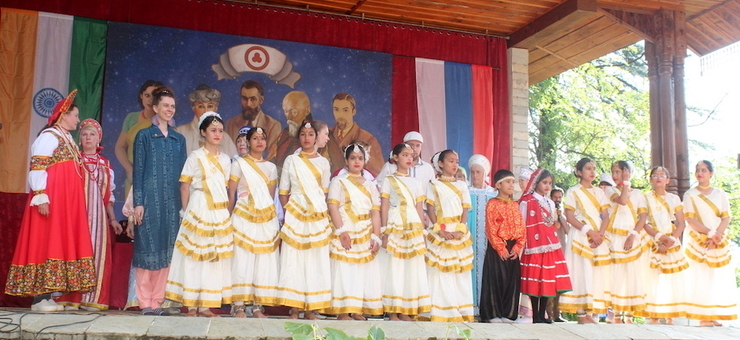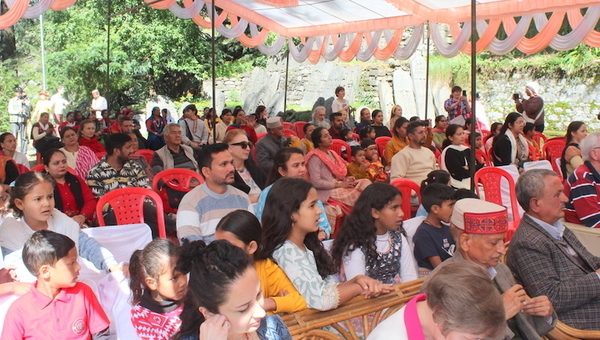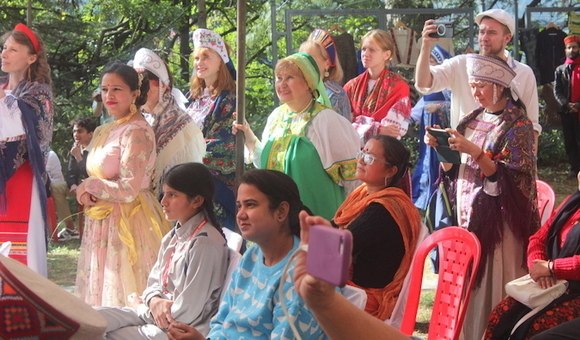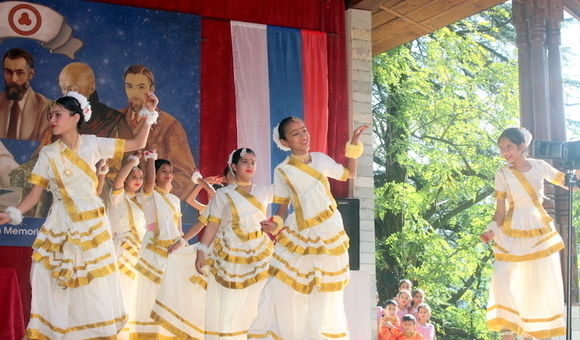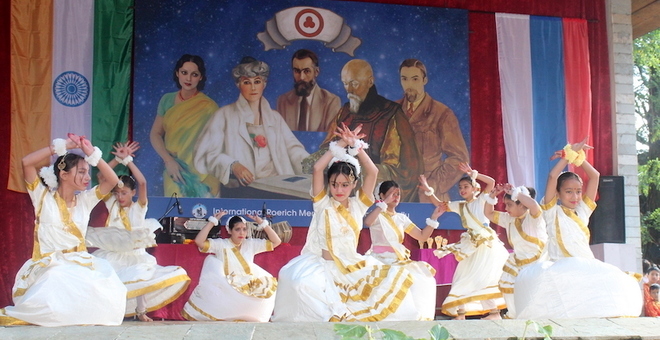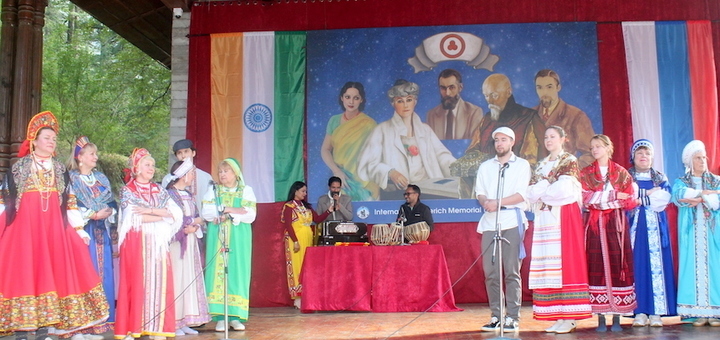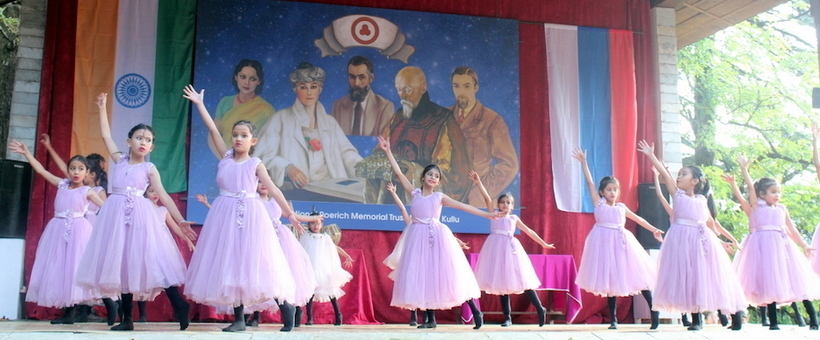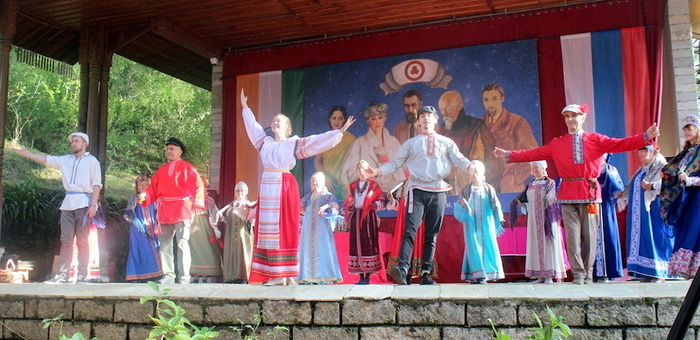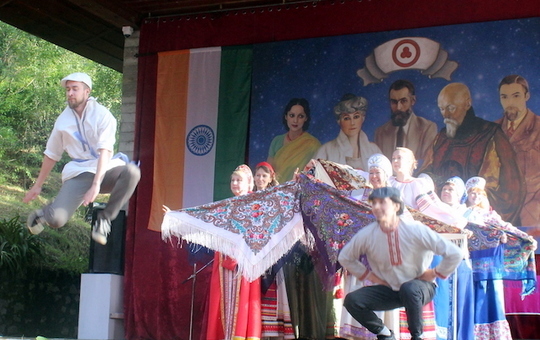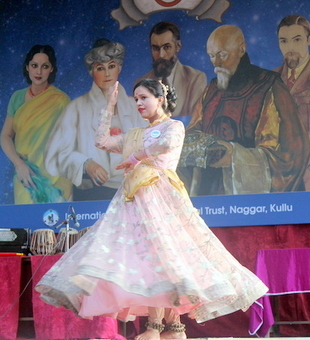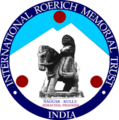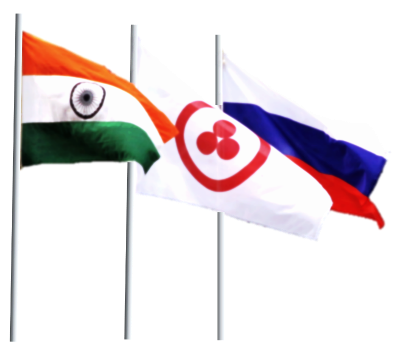09.10.2025
«Under the Banner of Culture». October Indo-Russian Festival at the Roerich Estate
The heritage of Nicholas Roerich (1874–1947) is profound and multifaceted. An outstanding son of Russia, he lived in India for more than twenty years. He was an artist, writer, scientist, philosopher, traveller and public figure. One of his greatest gifts to humanity was the International Treaty for the Protection of Artistic and Scientific Institutions and Historical Monuments, also known as the Roerich Pact. Its symbol is the Banner of Peace, which Nicholas Roerich himself referred to as the 'Red Cross of Culture'. The Pact was signed in 1935, exactly 90 years ago, and this year's traditional Indian-Russian Festival in October at the International Roerich Memorial Trust is dedicated to this significant anniversary.
The main day of the festival, 9 October, began as always at Nicholas Roerich's Samadhi, the place of his cremation where a large memorial stone stands. Once a year, on the artist's birthday, a Hindu prayer for peace called the Shanti Puja is held here. Surrounded by high Himalayan peaks and under a canopy of mighty green cedars, guests from Russia, India and other countries join priest Shri Jaidev Acharya from the Krishna temple to offer heartfelt gratitude to the Russian 'Maharishi Nicholas Roerich, a great friend of India' and sacred prayers for harmony and prosperity throughout the world.
Representatives from the Indian and Russian public participated in this year's solemn ceremony of raising the national flags of India and Russia, as well as the Banner of Peace. Vishwanath Nair, a renowned master weaver, was given the honour of raising the Indian flag, alongside a group of women from the 'Colours of the Himalayas' collective whom he teaches weaving in Summa village, Kullu. Tamara Merges and Vasily Tkachev, leaders of a group of volunteers from the International Centre of the Roerichs in Moscow, raised the Russian flag together with all members of the volunteer team. As is tradition, the Banner of Peace was raised by the Indian and Russian curators of the IRMT, together with Galina and Rainer Schneider, the President and Deputy President of the German Roerich Society, who were honoured guests of the Roerich Trust.
A special section of the exhibition was dedicated to the works of students from the St. Petersburg State Art and Industry Academy named after A.L.Stieglitz (Russia). In their paintings and graphic works, the students depicted cultural monuments of St. Petersburg and other famous Russian cities. These talented works were created under the curatorship of Lyudmila Kirsanova, who is both a professor at the Academy and a long-time friend of the International Roerich Memorial Trust.
Following the ceremony and festive laying of floral garlands on the bronze busts of Nicholas and Helena Roerich, all guests and participants of the Festival proceeded to the IRMT Exhibition Hall, where a painting exhibition by renowned artist Carol Mary Fraser was opened. Originally from Great Britain, Carol lived in India for over 20 years, travelled to the sacred peaks of the Himalayas and wrote books about her spiritual and creative journey. A musician by training, Carol's innate musicality and professional knowledge are embodied in the colourful tonality and smooth lines of her paintings. "The Lake of Mind. Contemplation on the Way to Shambhala", the exhibition's poetic title, reflects Carol Fraser's profound reflections on the human psyche and those sacred concepts that everyone who embarks on a moral and spiritual development journey will sooner or later approach. The symbolism of the paintings encapsulates the artist's personal spiritual experiences, which she wishes to share with viewers by inviting them on a fascinating journey into the depths of the microcosm and macrocosm.
Another fascinating exhibition opened at IRMT in honour of Nicholas Roerich's birthday – an exhibition of works by young Indian and Russian artists, winners of the International Festival of Children's and Youth Creativity 'The Roerich Realm', organised by the International Centre of the Roerichs (ICR, Moscow). The exhibition was curated by ICR volunteers and received widespread acclaim. It provided a unique opportunity to experience the world from a child's perspective. The natural beauty of Russia and India, and the architectural grandeur of temples, is awe-inspiring. The heroes and warriors of ancient legends and myths are a source of inspiration. The works of art and traditions of folk culture are a testament to the human spirit. Amidst this diversity, the images of the Roerich family and the Banner of Peace, which the Roerichs raised above our planet, stand out. The exhibition is entitled 'Under the Banner of Peace'. The Banner of Peace will assist people in protecting and preserving cultural treasures. The Banner of Peace will enlighten hearts by introducing them to the sacred concepts of Beauty, Knowledge, and Love. Under the Banner of Peace, we will enter a bright future where there will be no wars or destruction, where creativity will flourish, and where children will be happy.
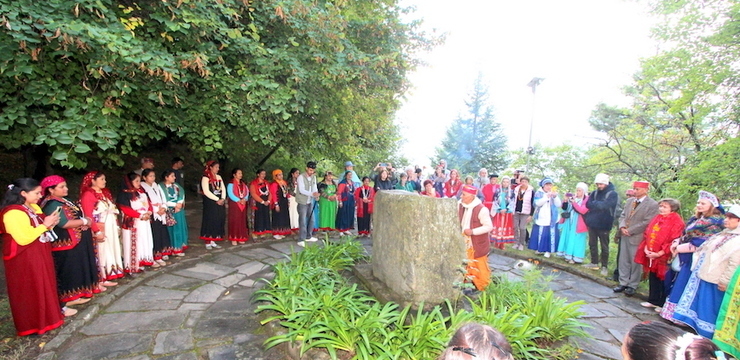
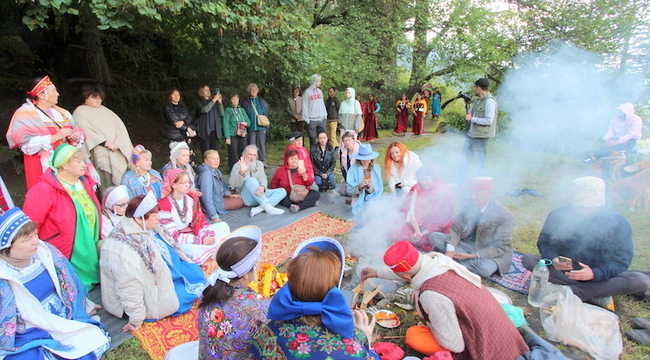
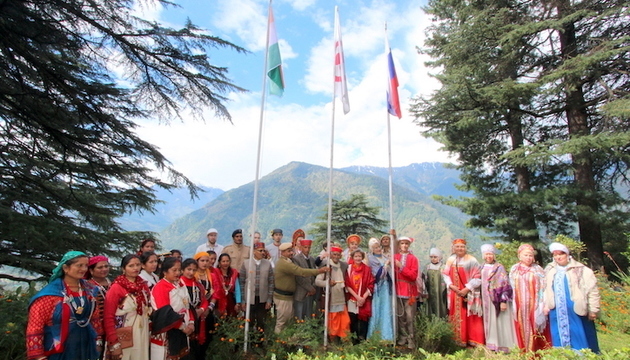
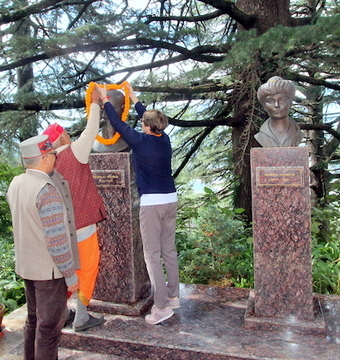
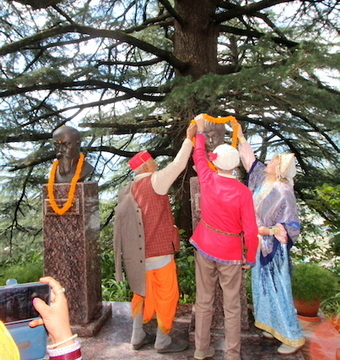
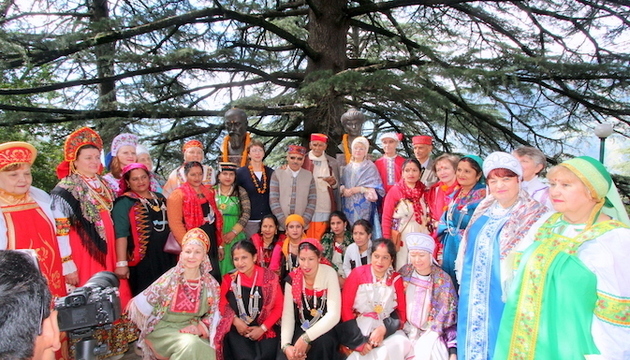
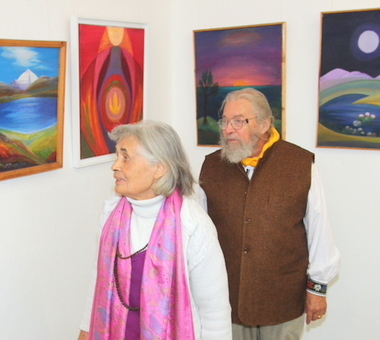
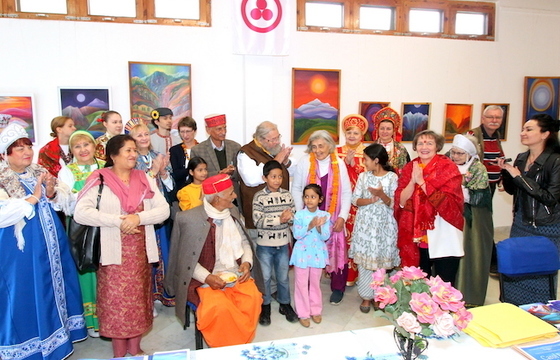
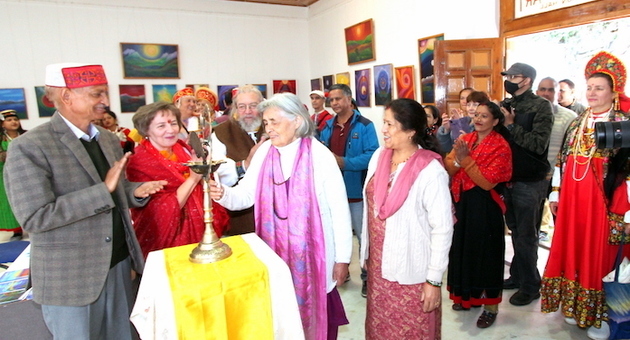
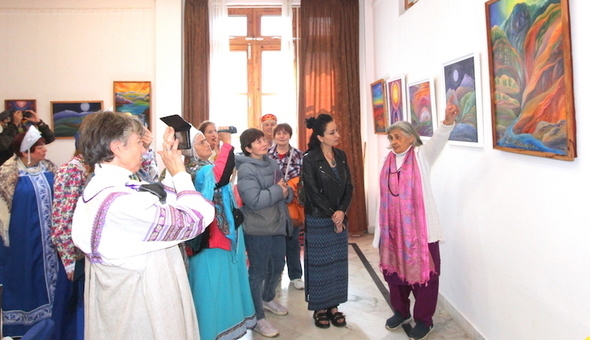
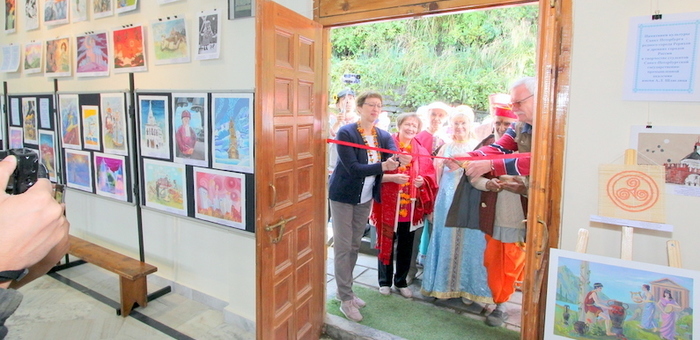
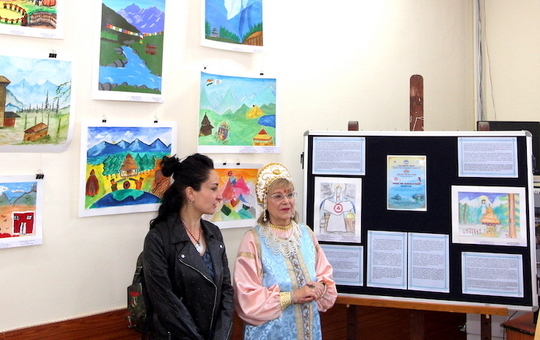
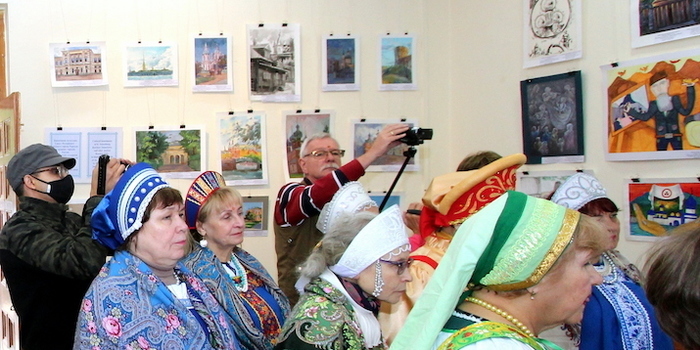
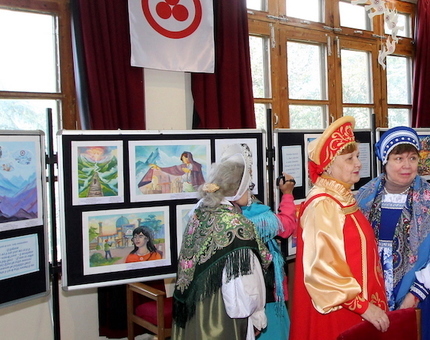
One of the most significant events of the Festival was the grand opening of the new exhibition of the Chemical Laboratory in the building of the Urusvati Himalayan Research Institute. The laboratory is located on the upper floor, at the end of a glassed-in gallery, with evergreen deodar branches visible through the windows.
IRMT Russian curator Larisa Surgina, representing the International Centre of the Roerichs (Moscow), informed the assembled guests that this was the third inauguration of the Urusvati Chemical Laboratory. She was pleased to announce that laboratory tables and memorial shelves have been partially restored, especially for the new exhibition. Their shelves contain books from the Urusvati library and archive folders that once contained letters and documents belonging to the Roerichs and their colleagues. On the table in front of the window is a memorial laboratory setup for extracting active substances from medicinal Himalayan plants; next to it is an antique laboratory heating cabinet with additional equipment. The shelves are lined with ceramic crucibles and glass flasks of various shapes and sizes, which the Roerichs and their colleagues used for various studies. Next to the table is a slide projector, which in the old days was powered by a kerosene burner. In the foreground is a ceramic water filter and a special press for squeezing. An old chair is slightly moved away from a small desk with a microscope and an open book, and it appears that George Roerich (or his younger brother Svetoslav) has just left the laboratory, leaving his work gloves on the table.
As participants and guests of the Festival opened exhibitions and got to know the new display, music played on the IRMT Green Theatre stage. Meanwhile, the students of the Helena Roerich Academy of Arts for children and their teachers were putting on their final show, while parents took their places in the audience. In front of the stage, women members of the Manav Bunae creative women's group from Naggar, masters of knitting, weaving, braiding and other decorative and applied arts, had already set up their exhibition and sale. Nearby, Russian beauties in sarafans and kokoshniks (members of the ICR volunteer group) offered everyone the opportunity to taste Russian rusks, gingerbread and sweets.
Then, students from the IRMT Academy performed a musical prayer to Saraswati, the goddess of art and science. Anshul Kumar, the host of the celebration and music teacher, then announced the start of the welcome ceremony. Indian IRMT curator Suresh Kumar and Russian IRMT curator Larisa Surgina congratulated everyone gathered on this momentous day. They then invited the Festival's guests of honour onto the stage to light the traditional lamp.
The greetings of Alexander Stetsenko, Vice-President of the International Centre of the Roerichs, were delivered to the Festival. He noted that interest in Nicholas Roerich's work is steadily growing in India, and that the International Roerich Memorial Trust deserves much of the credit for this. Roerich was convinced that humanity could achieve true peace and progress only through culture. His call for ‘Peace through Culture’ unites all enlightened people on the planet who are ready for peace and cooperation under the banner of the spiritual values of culture.
Galina Schneider, President of the German Roerich Society and member of the International Council of Roerich Organisations named after Svetoslav Roerich, read out a greeting from Elvira Chistyakova, President of the Council. In the greeting it was noted that ideas of Nicholas Roerich about the important role of culture for the future of humanity corresponded with the ideas of Indian writer and activist Rabindranath Tagore, who wrote: “Civilisation awaits a great completion, the expression of it’s soul is beauty”. Thus, both geniuses considered careful treatment of cultural treasures and their preservation for future generations to be an urgent task for entire world community.
This was followed by a celebratory event during which the winners of a literary competition were honoured. The competition was held among schoolchildren from the Kullu Valley and students of the Helena Roerich Academy of Art for Children as part of the “Roerichs' Realm” Festival. Excerpts from the most accomplished essays were presented by Anshul Kumar and Olga Karaseva, assistant to the Russian curator of the IRMT. Here is one of the beautiful quotes by Yahana Thakur:
“The Roerich Realm is not confined to museums or treaties - it is a living vision, a call to recognize the sacredness of culture, the power of art, and the unity of all spiritual traditions. Through his paintings, writings, and activism, Nicholas Roerich crafted a world where beauty leads to truth, and truth leads to peace. In honoring culture, we honor the soul of humanity. And in Roerich's realm, the soul is not just remembered -_ it is celebrated, protected, and lifted toward the light.”
The winners received prizes, gifts and copies of Nicholas Roerich's book of essays East-West, which was published by the IRMT in collaboration with the ICR in three languages to celebrate the 150th anniversary of Nicholas Roerich.
The musical programme at the celebration was full of brightness and energy, captivating everyone. After performances by the Academy's students and teachers in colourful Indian attire, there were dances and songs by Russian guests in traditional Russian dress. Mamta Thakur, a dance teacher at the Academy, performed a mesmerising Indian dance. Together with Anshul Kumar, the Russian guests sang the Russian folk song “Walking Along the Don”. The beloved Russian song 'Katyusha' was performed by children and adults alike.
Thus, under the Banner of Peace — the Banner of Culture, which has flown over the Roerich Estate for more than thirty years — the 2025 October Festival is taking place. The gods of the Kullu Valley favour the Festival, granting it sunny weather as it takes place in an atmosphere of love, knowledge and beauty.
